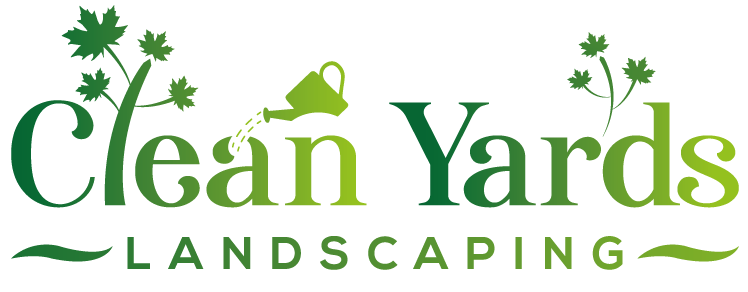Embrun Soil Improvement: Fix Clay for Lush Spring Gardens
Quick Summary
- Heavy clay soil in Embrun/Ottawa drains poorly when wet and compacts when dry.
- Improving clay requires adding generous amounts of organic matter (compost, aged manure, leaf mold).
- Amend soil in fall or spring, but never work it when wet.
- Use a garden fork or spade to incorporate amendments into the top 6-12 inches.
- Mulching and annual top-dressing with compost are key for long-term soil health.
- Raised beds are a great alternative to amending native clay.
Okay, Embrun gardeners, let's talk dirt! Specifically, that heavy, sticky clay soil that sometimes feels more like pottery class than prime gardening real estate, right? If you've ever tried digging after a good rain (or tried breaking through it when it's dry and hard as a rock), you know the struggle is real. You're definitely not alone! This challenging clay soil is pretty common across the Ottawa region, from Embrun right over to our neighbours in Russell and Metcalfe.
Need help transforming your tricky clay soil? Get a head start!
Request Your Free Quote TodayThe problem? Heavy clay holds onto water forever, leading to poor drainage and sad, waterlogged plant roots. Then, when it dries, it compacts, making it tough for roots to spread out and find nutrients. Trying basic landscaping or dreaming of a vibrant spring garden can feel like a workout worthy of an Olympic medal!
But don't hang up your trowel just yet! Wrestling with Embrun clay doesn't mean you have to give up on beautiful blooms and bountiful veggies. The secret weapon is soil improvement. With a bit of know-how and the right amendments, you can transform that stubborn clay into a rich, fertile foundation for the lush garden you've been picturing. Let's dig into how you can make your garden beds the envy of the neighbourhood this spring!
Introduction: Wrestling with Embrun Clay? Let's Build a Lush Spring Garden!
Okay, Embrun gardeners, let's talk dirt! Specifically, that heavy, sticky clay soil that sometimes feels more like pottery class than prime gardening real estate, right? If you've ever tried digging after a good rain (or tried breaking through it when it's dry and hard as a rock), you know the struggle is real. You're definitely not alone! This challenging clay soil is pretty common across the Ottawa region, from Embrun right over to our neighbours in Russell and Metcalfe.
The problem? Heavy clay holds onto water forever, leading to poor drainage and sad, waterlogged plant roots. Then, when it dries, it compacts, making it tough for roots to spread out and find nutrients. Trying basic landscaping or dreaming of a vibrant spring garden can feel like a workout worthy of an Olympic medal!
But don't hang up your trowel just yet! Wrestling with Embrun clay doesn't mean you have to give up on beautiful blooms and bountiful veggies. The secret weapon is soil improvement. With a bit of know-how and the right amendments, you can transform that stubborn clay into a rich, fertile foundation for the lush garden you've been picturing. Let's dig into how you can make your garden beds the envy of the neighbourhood this spring!
Understanding the 'Gumbo': What Makes Ottawa & Embrun Clay Soil Unique
Okay, let's get our hands dirty (metaphorically, for now!) and talk about the infamous soil we often affectionately call "gumbo" here in Ottawa and Embrun. If you've lived in places like Greely or Osgoode too, you've probably met this soil type. It's got a reputation, hasn't it? So, what exactly is this stuff that challenges our gardening and landscaping dreams?
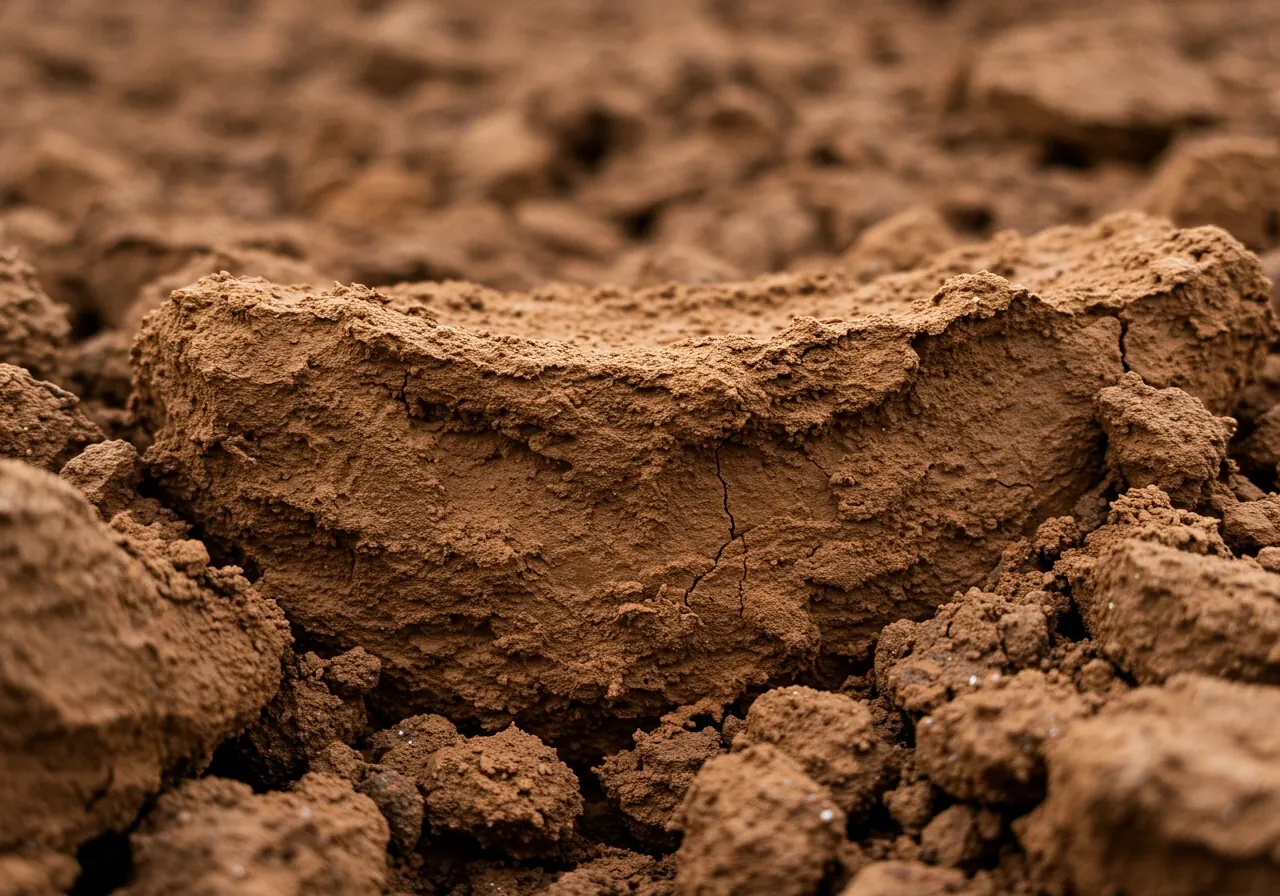
Clay soil is made up of teeny-tiny mineral particles packed super close together. Think of it like microscopic plates stacked tightly, leaving very little space between them. This structure gives our local soil some unique personality traits – some good, some... well, challenging.
The Silver Linings (Yes, there are some!):
- Nutrient Hoarder: Clay is fantastic at holding onto essential plant nutrients. Unlike sandy soils where nutrients can wash away quickly with rain, clay grips onto them, keeping food available for your plants longer. Bonus!
- Water Saver (Sometimes): It holds water really well. During those hot, dry Ottawa summer stretches when things get crispy, this water retention can be a lifesaver for your plants, reducing the need for constant watering.
The Struggles (Where the "Gumbo" nickname comes from):
- The Swamp Effect: That water-holding superpower? It backfires spectacularly during our notoriously wet springs or after a heavy downpour. The tiny particles leave very little room for excess water to drain away, leading to soggy roots and unhappy plants suffocating in waterlogged soil. This is why addressing water buildup is crucial for plant health; you can learn more about practical solutions with these Embrun Spring Drainage Fixes to Prevent Flooding.
- Rock Hard Syndrome: When our heavy clay dries out in the summer sun, it can become incredibly hard and compacted – almost like concrete. Plant roots struggle mightily to push through it, and water has a tough time soaking in, often just running off the surface. This compaction stresses lawns and garden beds. Improving this density is key, which is why understanding Embrun Lawn Aeration and Its Importance for Soil Health is so beneficial. Healthy, aerated soil makes other lawn care efforts, like successfully Overseeding Your Embrun Lawn for Thicker Grass, much more effective.
- Slowpoke Warming: Compared to lighter, sandier soils, clay takes its sweet time warming up in the spring. This can mean a slightly delayed start for some of your favourite plants.
Quick DIY Soil Test:
Not sure if you have clay? It's easy to check! Grab a handful of moist (not dripping wet, just damp) soil from your yard. Squeeze it into a ball in your hand. Now, try to push that soil ball between your thumb and forefinger, forming a ribbon. If you can make a smooth ribbon that holds together for an inch or two (or even longer!), congratulations – you've definitely got clay!
Understanding your unique soil is the crucial first step to working with it, not constantly battling against it. Good soil improvement leads to healthier, more resilient plants that can better withstand seasonal stresses and benefit more from regular care, like following the tips in our Embrun Winter Shrub Pruning Guide. If transforming that stubborn clay feels like too big a project, remember there are professional Landscaping and Gardening Services ready to lend a hand and help create the thriving garden foundation you envision.
The Glorious Payoff: Why Improving Your Clay Soil is Worth the Effort
Okay, let's be honest for a second. Wrestling with that heavy Ottawa clay soil can sometimes feel like a full-body workout you definitely didn't sign up for, right? Shovels protest, boots get sucked into muddy messes, plants sometimes look sadly waterlogged after a good rain, and then during a dry spell, the ground turns into something resembling ancient concrete. It’s enough to make even the most enthusiastic gardener in Nepean or Barrhaven want to occasionally just throw in the trowel!
But here’s the wonderful, glorious secret: putting in the time and effort to improve your clay soil is so incredibly worth it. Think of it less as a chore and more as a fantastic investment in years of future gardening bliss. What’s the payoff, you ask? Let’s count the ways:
- Easier Digging (Hallelujah!): Imagine sinking your spade or fork easily into rich, crumbly earth instead of doing battle with every shovelful. Amended soil is looser and much more cooperative. Your back will thank you!
- Happy, Hydrated Roots (Not Drowned Ones): Improved soil structure means much better drainage. Excess water from our Ottawa spring melts or summer storms can actually escape, preventing roots from sitting in soggy conditions and potentially rotting.
- Better Air Circulation: Just like us, plant roots need to breathe! Adding organic matter creates small air pockets, allowing for better oxygen flow which is crucial for healthy root development.
- More Vibrant, Resilient Plants: When roots can spread easily, access nutrients efficiently, and aren't stressed by waterlogged or compacted soil, your plants thrive! Expect more flowers, lusher foliage, bigger harvests, and plants that are generally tougher against pests and diseases. Your landscaping dreams start looking much more achievable.
- Less Work in the Long Run: While gardens always need tending, healthier soil often means less emergency intervention. Plants are stronger, and tasks like weeding and watering can become more manageable. Of course, regular upkeep is key – a spring refresh using an expert garden clean-up service can set you up for success, and applying professional mulching and edging helps protect your improved soil structure, retain moisture, and suppress weeds wonderfully.
Transforming heavy clay takes dedication, whether you DIY or bring in help. Sometimes, getting started might even mean a broader approach, like a seasonal yard cleanup service or even a complete property cleanup service to really reset the stage. And if the whole process feels overwhelming, remember there are fantastic professional landscaping and gardening services available to help turn that tough clay into black gold. You might also consider our services if you are in nearby areas like Marionville.
So, take heart! The effort you put into improving your soil today leads directly to a more beautiful, productive, and enjoyable garden tomorrow. Don't let that stubborn clay win – the glorious payoff is waiting!
Your Soil Improvement Arsenal: Amendments & Tools for Success
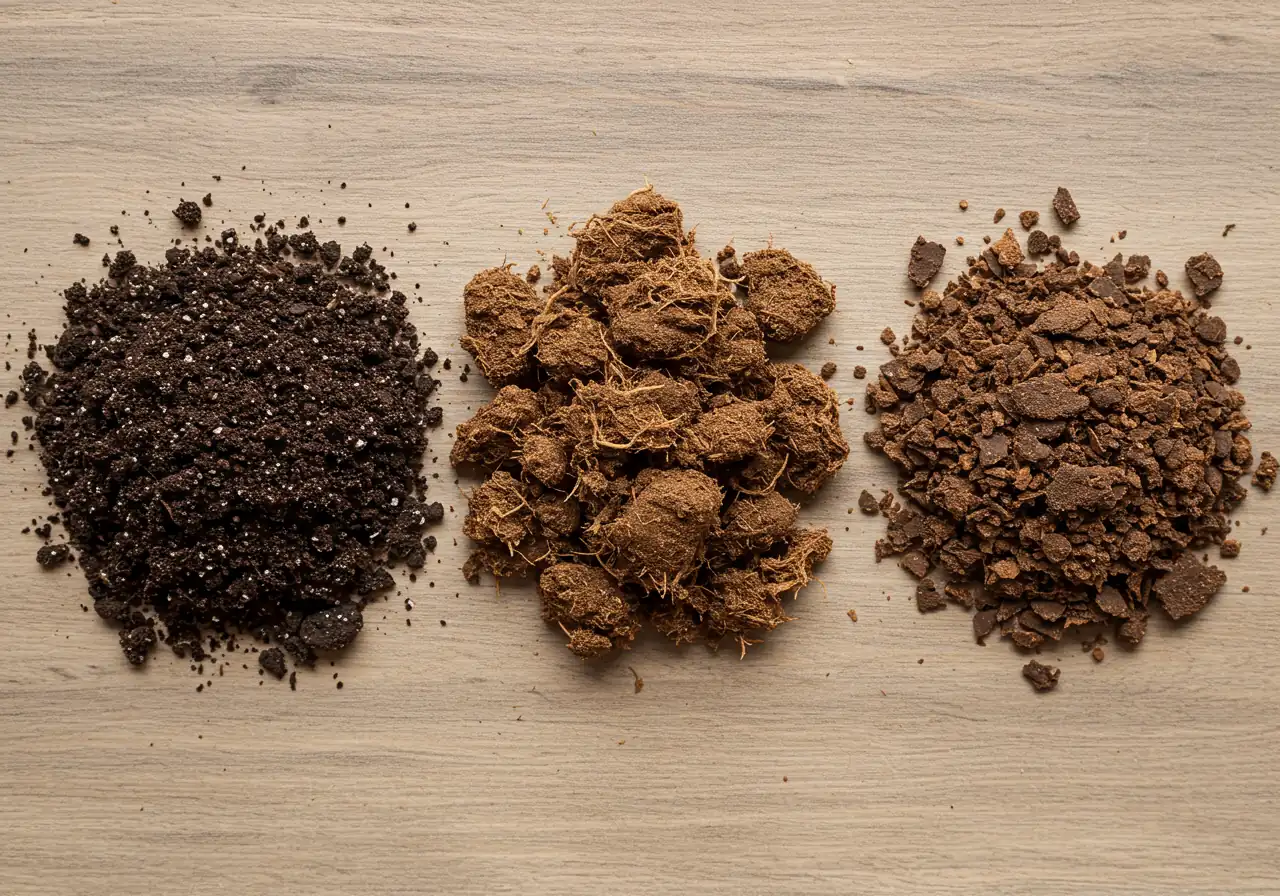
Alright, team, time to assemble your toolkit for tackling that stubborn Ottawa clay! Think of this section as your soil improvement headquarters. Improving clay soil is less about brute force and more about adding the right stuff. The undisputed champion in this fight? Organic matter. Let’s dive into the amendments and tools that will turn your hard-packed earth into garden gold.
The Organic Matter MVPs (Most Valuable Players!)
Organic matter is the magic ingredient. It works wonders by binding tiny clay particles into larger clumps, creating space for air and water. It also feeds beneficial soil microbes and slowly releases nutrients. Here are your star players for your gardening and landscaping projects:
- Compost: The absolute king! Well-rotted compost, whether homemade from kitchen scraps and yard waste or purchased, improves soil structure, adds nutrients, and boosts microbial life. It's like a multivitamin and a structural engineer all rolled into one for your soil. Find local compost resources via the City of Ottawa Green Bin program.
- Aged Manure: Packed with nutrients, aged manure (like cow, horse, or sheep) is fantastic. The key word here is aged. Fresh manure is too "hot" and can burn your plants. Let it rot down for at least six months to a year before adding it.
- Leaf Mold: Don't throw away those autumn leaves! Piled up and left to decompose for a year or two, they create leaf mold – a wonderful, crumbly amendment excellent for improving soil structure and retaining moisture. It's nature's free gift to gardeners!
- Cover Crops (Green Manure): Planting things like clover, rye, or buckwheat and then tilling them back into the soil before they set seed adds a massive boost of organic matter and can help break up compacted layers naturally.
Compost
Pros: Excellent all-around soil conditioner, improves structure and fertility, boosts microbial life, readily available (homemade or purchased).
Cons: Nutrient content varies, can be bulky to transport.
Best For: General soil improvement, top-dressing, potting mixes.
Aged Manure
Pros: Rich in nutrients (especially nitrogen), improves soil structure.
Cons: MUST be well-aged to avoid burning plants, potential for weed seeds if not properly composted, nutrient levels can be high.
Best For: Boosting fertility in vegetable gardens, hungry plants (use moderately).
Leaf Mold
Pros: Excellent for improving soil structure and water retention, mimics natural forest floor, free resource if you collect leaves.
Cons: Takes time to decompose (1-2 years), lower in nutrients compared to compost/manure.
Best For: Improving aeration and moisture retention, woodland gardens, mulch.
Other Helpers (Use Wisely):
- Peat Moss: Great for water retention and adding acidity (perfect if you dream of growing blueberries!), but due to sustainability concerns regarding peat bog harvesting, compost or leaf mold are generally more eco-friendly choices.
- Gypsum: Sometimes recommended, it can chemically help loosen some specific types of clay soil by improving aggregation, but focusing on adding plenty of organic matter usually provides broader, longer-lasting benefits for overall soil health. Crucially, avoid the temptation to just add sand to heavy clay – you'll likely create a substance closer to concrete than fertile loam!
Your Trusty Tools:
You don't need a giant shed full of gear, but these basics make the soil improvement job much easier:
- A sturdy spade or shovel for digging and turning over soil.
- A garden fork or even better, a broadfork – these are fantastic for loosening compacted soil deeply with less disruption to the soil structure than rototilling.
- A reliable wheelbarrow for hauling your precious amendments across the yard.
- A basic garden rake to spread your compost or manure evenly over the garden beds.
Stocking Up:
You can find bagged amendments at most local garden centers throughout Ottawa and the surrounding areas. For larger quantities needed for bigger landscaping projects, check out landscape supply yards (some near communities like Manotick or Kars might offer bulk delivery options) or investigate the City of Ottawa's compost programs for residents. Of course, making your own compost and leaf mold is the most budget-friendly and sustainable route! For expert advice on gardening in our region, consider resources from the Master Gardeners of Ottawa-Carleton.
Sometimes, preparing your yard for this big soil project requires a bit of groundwork first, especially if things have gotten a bit wild over the seasons. If your yard is looking overgrown or cluttered with debris, utilizing a seasonal yard cleanup service in Metcalf or even broader property clean up assistance can clear the decks effectively. This vital first step ensures you're amending the actual soil, not just burying old leaves and twigs! Similar professional help is available across the region, like a dedicated Marionville yard cleanup service if you happen to be further east. Once the general area is tidy, focusing specifically on the planting areas might benefit from a targeted Metcalf garden clean up service right before you start digging in all those wonderful amendments.
By adding these organic heroes generously (aim to work several inches into the top 6-12 inches of your existing soil), you'll be well on your way to transforming that challenging clay. It takes consistent effort over time, but be patient – your future thriving garden, filled with happy plants, will definitely send you a big Thank You for all this amazing soil prep work!
Step-by-Step: Transforming Embrun Clay into Garden Gold
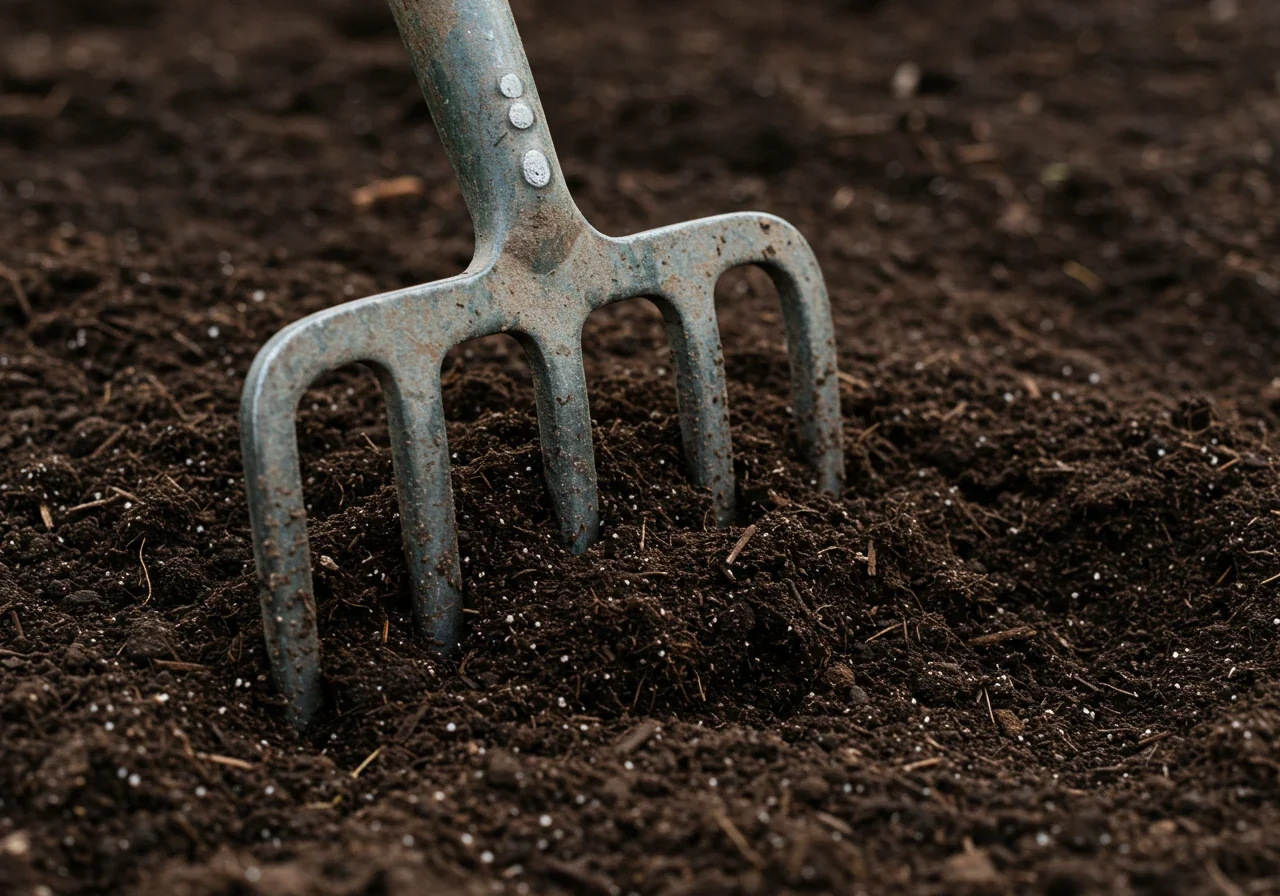
Alright, ready to roll up those sleeves and turn that stubborn Embrun clay into the stuff of gardening dreams? It’s totally doable! This isn't instant magic – think of it more like a rewarding fitness program for your soil. It takes consistent effort, but follow these steps, and you'll be well on your way to lush, happy plants.
Step 1: Pick Your Moment
Ideally, amend in the fall. Spring works too, but never work clay soil when wet! Wait until it's just damp. Ensure the area is clear - consider an Ottawa Yard Cleanup Service or targeted Metcalf Garden Clean Up Service if needed.
Step 2: Gather Amendments
Collect compost, aged manure, or leaf mold. Aim for a generous 3-6 inch layer over your existing garden soil.
Step 3: Spread Evenly
Use a shovel and wheelbarrow to distribute amendments evenly. Rake smooth.
Step 4: Mix Gently
Use a garden fork (preferred) or spade to incorporate amendments into the top 6-12 inches. Avoid excessive tilling. The goal is to loosen and mix, not pulverize.
Step 5: Rake & Rest
Level the surface. Let the bed rest (a week or two in spring) before planting.
Step 6: Ongoing Care
Soil improvement is continuous. Add compost annually. For large or tough jobs, like new builds or extensive Sod Installation prep, Book an Estimate for professional help. Share your experience via our Estimate Feedback form!
There you have it! It’s work, yes, but transforming that tricky clay means healthier roots, more vibrant flowers, tastier veggies, and less frustration for you. Stick with it, and watch your garden thrive!
Keeping It Healthy: Year-Round Care for Your Improved Soil
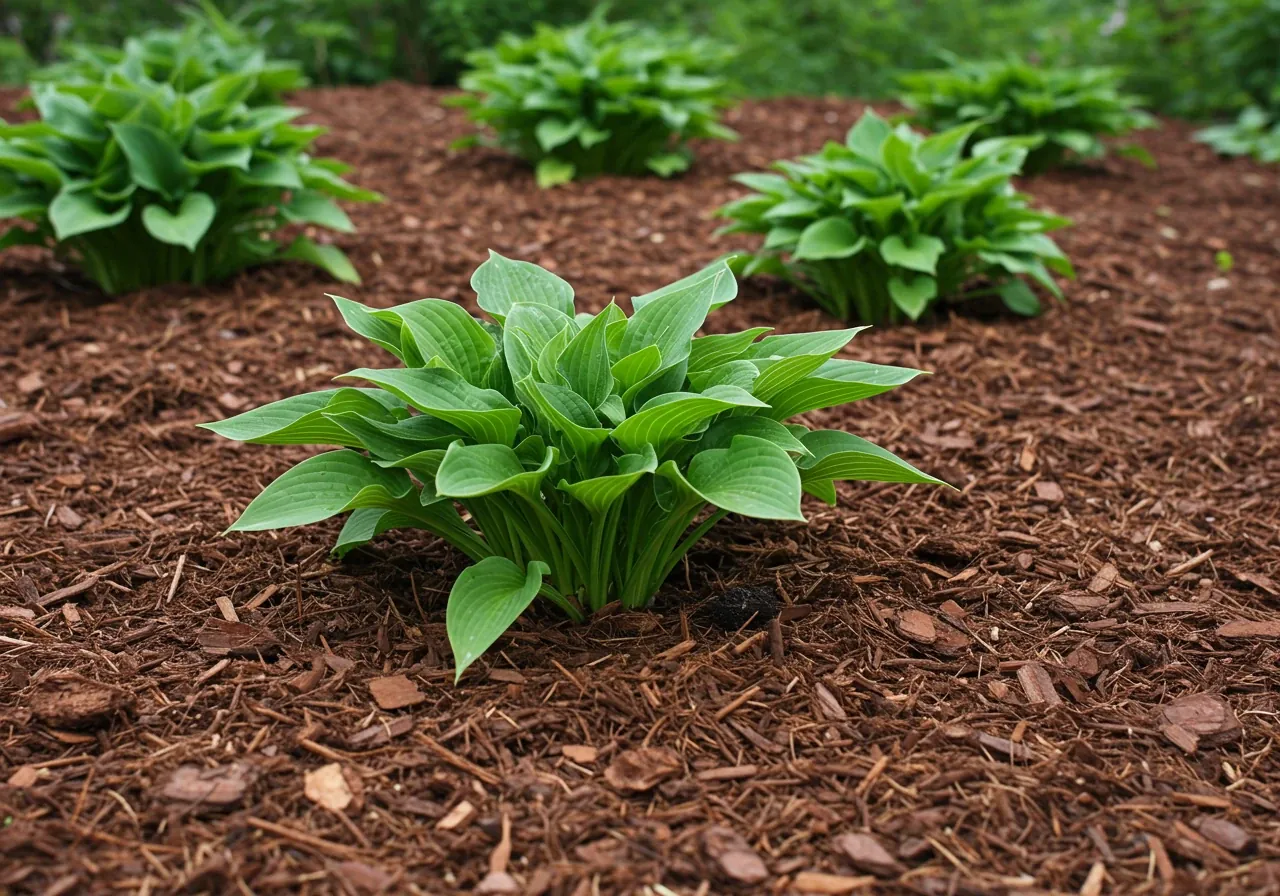
So, you wrestled that tough Ottawa clay into submission – fantastic work! You’ve added amendments, improved the structure, and maybe even seen some initial rewards in your garden beds. High five! But like any great relationship, keeping your soil happy requires ongoing love and attention. Think of it less as a chore and more like maintaining a friendship – a little regular care goes a long way! Maintaining healthy soil structure isn't a one-time fix; it's a continuous cycle that ensures your landscaping investment pays off year after year, contributing to beautiful garden installs and easier garden maintenance.
Here’s a simple seasonal guide to keeping that glorious soil in tip-top shape right here in our Zone 5a climate:
- Spring Awakening: As the snow melts (finally!), resist the urge to stomp around on soggy ground – compaction is the enemy! If you must walk on beds, use planks to distribute your weight. Gently rake away any matted leaves or winter debris. This is a great time to top-dress your beds with a fresh layer (about an inch) of compost to give plants a gentle boost as they wake up. A thorough spring tidy-up sets the stage beautifully; consider an expert Ottawa property cleanup service if the whole yard needs refreshing before you focus on the gardens. Check your mulch levels and replenish if needed to suppress early weeds.
- Summer Sustenance: Keep that mulch layer consistent (2-3 inches)! It’s your soil’s best friend in summer, conserving precious moisture during dry spells and keeping weeds down. Water deeply when needed, encouraging strong root growth, rather than frequent shallow sprinkles. Healthy soil often means your plants need less supplemental feeding, but keep an eye on them. Remember, healthy garden soil often sits beside your lawn, and keeping that turf happy complements your beds; explore options for consistent lawn care maintenance to ensure the whole picture looks great.
- Fall Feast & Tuck-In: Autumn is prime time for soil love! After you’ve cleaned up spent plants (services like Marionville garden clean up can help), spread another generous layer of compost or well-rotted leaf mould over your beds. You don’t even need to dig it in vigorously; let the worms and winter weather do the work! Cover the beds with a winter blanket of shredded leaves or straw mulch to protect the soil from erosion and temperature extremes. Watching your yard transition with the seasons, especially after putting in work on the soil, is incredibly rewarding – you can see similar rewarding changes in these stunning garden transformations.
- Winter Respite: Let your soil rest. Avoid walking on the beds, especially during freeze-thaw cycles. Dream up next year's garden plans! If those plans involve significant changes or expansions, or if you're pondering how best to manage soil health across a larger property, feel free to Contact Us to discuss possibilities.
Eco-Friendly Boosters:
Keep making that compost! Adding your kitchen scraps (no meat/dairy) and yard waste back into the soil is the ultimate recycling program. Stick with natural mulches like wood chips, straw, or shredded leaves – they break down over time, continually feeding your soil’s ecosystem.
Adapting Your Approach:
Remember, a hungry vegetable garden will likely appreciate more frequent compost additions than an established perennial border. And if you're gardening in slightly cooler spots like Vernon or Kenmore, you might need to get your fall soil prep done a bit earlier before the deep freeze sets in.
Consistent care is the secret sauce. Keep feeding your soil with organic matter, protect it with mulch, and avoid compaction. Your soil will thank you with healthier, more resilient plants for years to come. We’re always curious about how things are growing for Ottawa gardeners; please share your soil success stories or challenges via our Estimate Feedback form!
Relative Impact of Amendments on Clay Soil Structure (Illustrative)
Note: Chart is for visualization purposes. Actual impact depends on quantity, quality, and existing soil conditions.
Clay Soil Quick Wins!
Feeling overwhelmed by that heavy Ottawa clay? Don't sweat it! Improving your soil is a marathon, not a sprint, but here are a few quick wins – essential tips to remember as you transform your patch of earth, whether you're in Barrhaven or beyond:
- Feed Your Clay: Organic matter is your superpower! Regularly mix in compost, aged manure, or leaf mold. This is the single best thing you can do for improving structure and fertility. Think of it as the foundation for all successful soil preparation strategies.
- Mulch, Mulch, Mulch: Apply a 2-3 inch layer of organic mulch (like shredded bark or wood chips) over your garden beds. This helps retain moisture, prevents the soil surface from baking into a brick in the summer sun, suppresses weeds, and slowly breaks down to add more organic matter. It’s a simple step with huge benefits for your landscaping.
- Timing is Everything (Avoid the Muck!): Seriously, never walk on or dig in your clay soil when it's soggy wet. You'll compact it terribly, undoing all your hard work. Wait until it's just slightly damp and crumbly. Patience here prevents major headaches later!
- Need a Hand or Have Questions?: Tackling tough clay, especially across a larger area, can be challenging. If you're looking for advice tailored to your specific Ottawa property or need professional help with amending your soil, please don't hesitate to contact Clean Yards Ottawa. You can learn more about our local team's approach and rest assured we respect your data, as detailed in our privacy policy. We also follow strict terms and conditions for all services.
Embrun & Ottawa Clay Soil FAQs
Ah, wouldn't that be nice! Unfortunately, there's no instant magic wand for transforming heavy Ottawa clay. Think of soil improvement as a marathon, not a sprint. The best and most sustainable "fix" is consistently adding organic matter like compost. While not instant, this gradually improves structure and fertility. For a quicker start, ensuring your garden beds are properly prepped can help; often, our Ottawa garden clean-up service includes initial soil turning which gives amendments a head start.
Hold on there! That's a common myth, but please don't add sand directly to heavy clay soil here in Embrun or anywhere else. Instead of creating lovely loam, you'll likely end up making something closer to concrete – even harder and more difficult for plant roots and water to penetrate! Stick with the proven method: adding lots of organic matter like compost or aged manure is the way to go for effective soil improvement.
While improving your soil is always best, some plants are naturally more tolerant of heavy clay conditions common in areas like Russell or Greely. Think Hostas, Daylilies, Coneflowers (Echinacea), Black-Eyed Susans, Sedum, and many ornamental grasses. Tough shrubs like Potentilla, Spirea, and some Hydrangeas can also do well once established. Amending the planting hole generously with compost gives even these tough guys a better start. You can often see examples of thriving gardens in our gallery that have likely dealt with similar soil challenges.
Great question! For ongoing gardening success in our clay, adding organic matter annually is ideal. The best times are usually in the fall, allowing winter weather to help incorporate it, or in the spring before planting. A yearly top-dressing of an inch or two of compost helps maintain good soil structure and replenish nutrients. Think of it as an annual treat for your soil! Clients can often coordinate amendment deliveries or applications when scheduling other services via our convenient customer portal for easy service management.
Absolutely! Using raised beds is a fantastic workaround for challenging clay soil in Ottawa. It allows you to control the soil environment completely, ensuring excellent drainage and the perfect soil mix right from the start. You'll need to fill them, of course, which involves selecting the right soil and mulch materials, but it bypasses the need for heavy digging into the native clay. It's a popular landscaping choice for a reason, especially for vegetable gardening. Check out our Google My Business page for reviews and photos!
If you need help with larger cleanups before starting, we offer services in various locations like Marionville property cleanup.
Amendment Quick Comparison
| Amendment | Primary Benefit | Nutrient Level | Considerations |
|---|---|---|---|
| Compost | Structure & Fertility | Balanced (varies) | Best all-around |
| Aged Manure | Fertility (Nitrogen) | High | Must be well-aged |
| Leaf Mold | Structure & Moisture | Low | Takes time to make |
| Peat Moss | Moisture & Acidity | Very Low | Sustainability concerns |
Conclusion: Grow Beautifully in Your Embrun Garden!
So, there you have it! Wrestling with that infamous Ottawa region clay, whether you're in Embrun, Greely, or even out near Metcalfe, doesn’t mean you're doomed to a lifetime of sad-looking plants or giving up on your landscaping dreams. We've learned that understanding its quirks (the good, the bad, and the sticky!) is the first step, and the real game-changer is consistent soil improvement. Adding that magic ingredient – generous amounts of organic matter like compost – truly transforms tough clay into fertile ground for thriving garden beds and happy, healthy plants.
Yes, it takes a bit of patience and maybe some elbow grease (unless you cleverly outsource the heavy lifting!), but think of the rewards: easier digging, healthier roots that aren't swimming or struggling, and the sheer joy of seeing your gardening vision come to life. Don't let the clay bully you out of the beautiful garden you deserve! Go ahead, embrace the challenge, feed your soil regularly, and get ready to grow beautifully right here in your own Embrun yard. Your trowel (and your back) will thank you later!
Feeling inspired but maybe a little daunted by the digging, hauling, or just knowing where to start? Let Clean Yards Ottawa take the strain! We specialize in soil improvement and comprehensive landscaping services across Ottawa, Embrun, Russell, and neighbouring communities.
Reach out for your free, no-obligation estimate today! Visit cleanyards.ca/contact-us.
Ready to get started on transforming your yard?
Book Your Project Estimate Online!Let's build that dream garden together.
